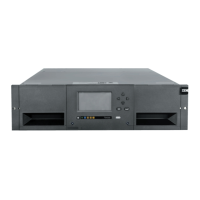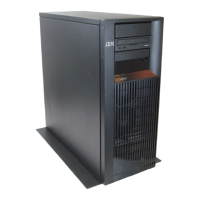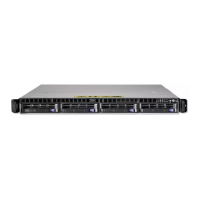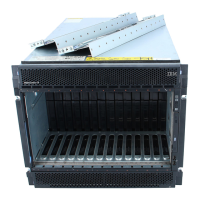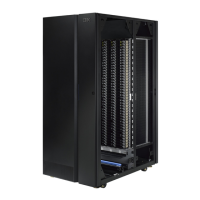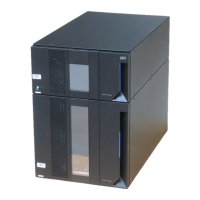SNMP messaging
Occasionally, the library might encounter a situation that you want to know about, such as an open
magazine or a fault that causes the library to stop. The library provides a standard TCP/IP protocol
called Simple Network Management Protocol (SNMP). SNMP sends alerts about conditions (such as need
for operator intervention) over a TCP/IP LAN network to an SNMP monitoring station. These alerts are
called SNMP traps. Using the information that is supplied in each SNMP trap, the monitoring station
(together with customer-supplied software) alerts operations personnel of possible problems or operator
interventions that occur.
All of the IBM automation products support SNMP (Simple Network Management Protocol) and all of
them support SNMP read and write capability.
The new SNMP Query Configuration capability provides a common Management Information Base (MIB)
across all of the IBM tape libraries. This capability allows a product administrator to audit the settings of
all of their IBM tape libraries to ensure that they comply with their own policies.
SNMP traps
SNMP traps are alerts or status messages that are collected, monitored, and used to proactively manage
attached libraries with SNMP protocol with the host servers. In summary, each trap provides the
following information:
v Product Identification such as product name, description, manufacturer, model number, firmware
level, and the URL that the trap is designated for.
v Product Status such as the severity of the trap, status (current and previous) and the time the trap
occurred.
v Library State (physical device status) such as identification and status of devices that is monitored. It
would include enclosure, power supply, controller, magazine status, drive count, cartridge slot count,
and I/O station count. Also included are certain library statistics, and where appropriate, the fault FSC
(fault symptom code) including the severity and description of that fault.
v Drive Status such as the identification of each drive in the library, firmware level, serial number, and
other address and status information.
v Trap Definitions such as library status change, open magazine, I/O accessed, hard fault information,
drive cleaning requests, excessive retries, and library that is returning to normal operations. For
information, refer to Appendix G. "SNMP Status MIB Variables and Traps" on page G-1.
v SNMP MIBs: The library's Management Information Base (MIB) contains units of information that
specifically describe an aspect of the system, such as the system name, hardware number, or
communications configuration. Status and error data is also gathered by MIBs and sent to one or more
IP addresses that are defined during the SNMP configuration operation. Download the SNMP MIB file
for this library from http://www.ibm.com/storage/support.
Maximum library storage capacity and data transfer rate
Table 8. Tape drive model and host interface type
Tape Drive Model Host Interface
Ultrium 8 Half Height drives
v 8 Gb/s Fibre Channel - single port
v 6 Gb/s Serial Attached SCSI (SAS) - dual port
Ultrium 7 Full Height and Half
Height drives
v 8 Gb/s Fibre Channel - single port (Full and Half Height)
v 6 Gb/s Serial Attached SCSI (SAS) - dual port (Half Height only)
Ultrium 6 Full Height and Half
Height drives
v 8 Gb/s Fibre Channel - single port (Full and Half Height)
v 6 Gb/s Serial Attached SCSI (SAS) - dual port (Half Height only)
Product description 7
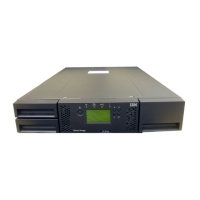
